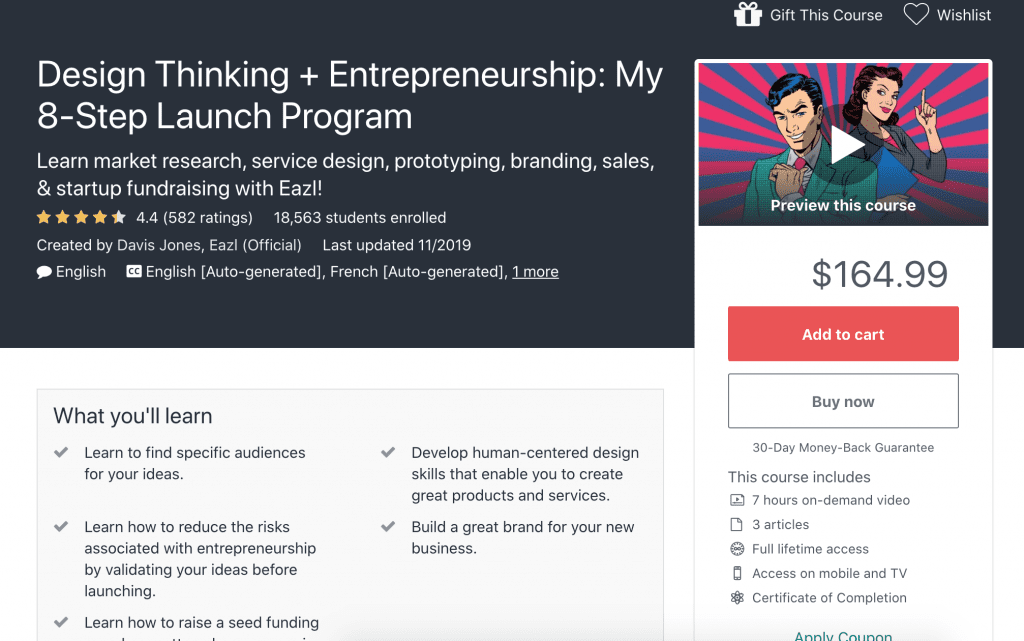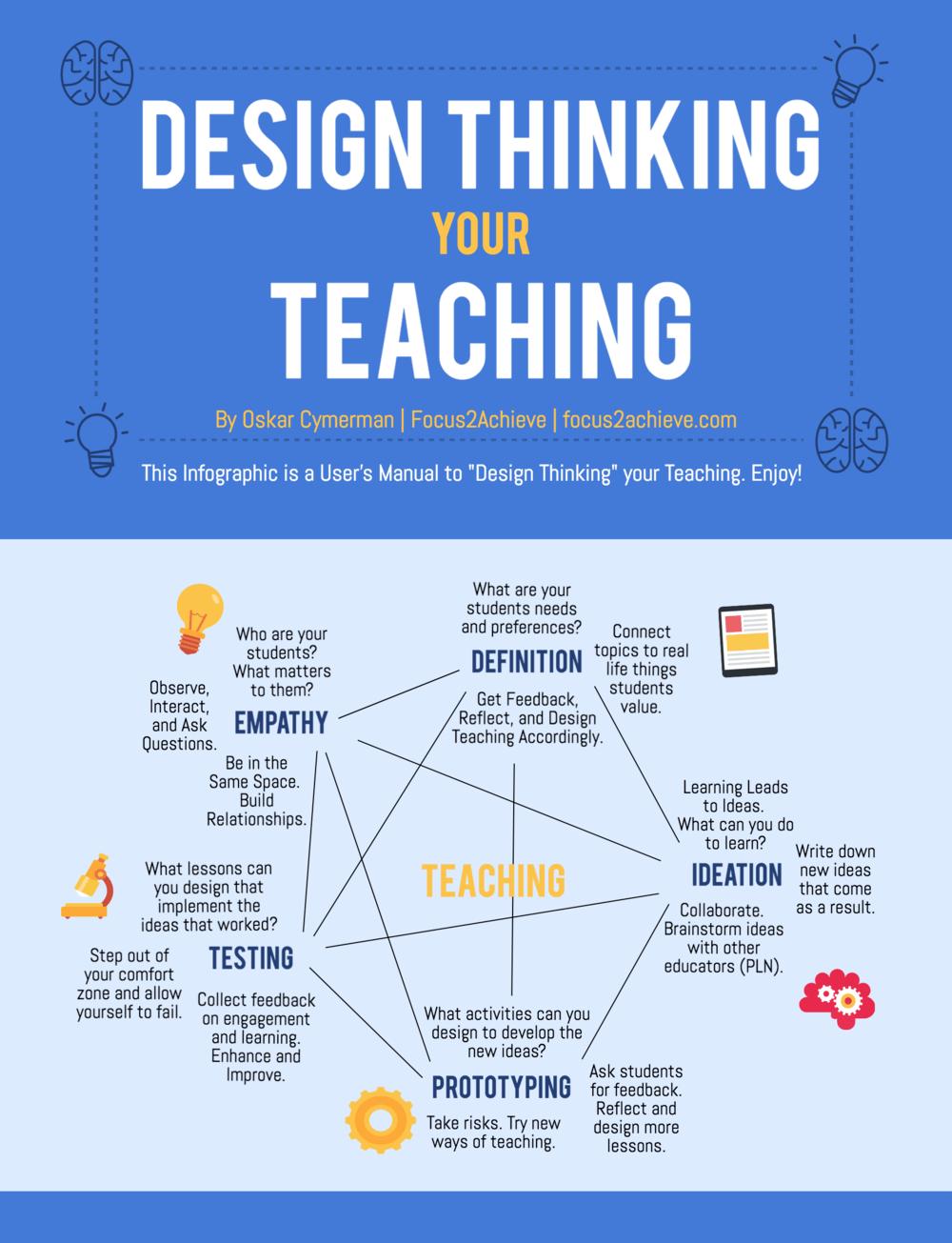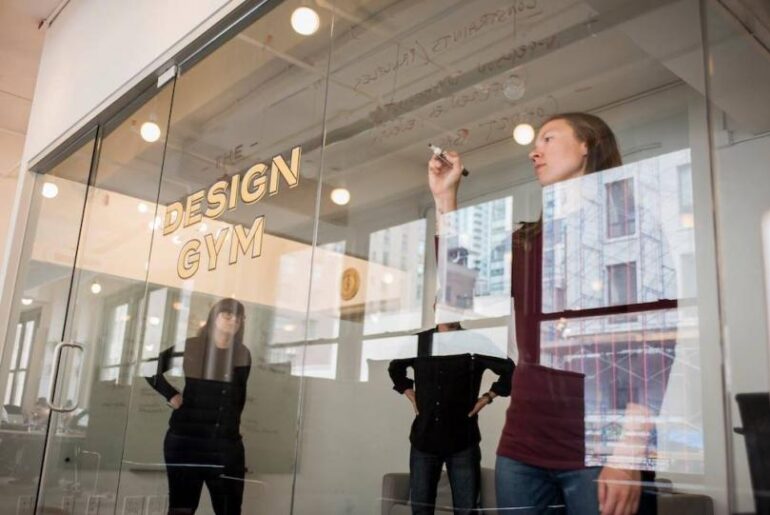Table Of Content

This Design Thinking course is suitable not only for people in business but anyone who has a problem and would like to know a creative approach for solving that problem. The learners work with a model containing following four key questions and several tools to help them understand design thinking as a problem solving approach. Design Thinking is an innovation methodology that is human centric and encourages focus on the needs of the clients to create better products, services and internal processes. It can be applied to every company regardless of their size, industry, stage of development, or geographical location. All major successful companies like Apple, Microsoft, Google, General Electric, IBM, Accenture, Daimler, Airbnb etc. use Design Thinking to innovate and make decisions. It focuses on advanced surface and feature-based modelling techniques as product design tools and enables you to develop competence in the use of these processes, techniques and tools.
Over 1,000 study spaces including rooms for group study and over 500 computers available.
By the end of the course, you will be able to knowledgeably design, run, and analyze your own experiments that give statistical weight to your designs. That means that design thinking is not only for designers but also for creative employees, freelancers, and business leaders. This is the best time to start learning Design Thinking methods to stay agile and at the top of your competition. One great way is taking an online Design Thinking course and training that can be accessed from anywhere. We are providing here a list of best online Design Thinking courses, certifications, classes, training programs and tutorials that you can use to gain the right knowledge and skill in this area. These are offered by the most acclaimed universities and industry leaders and many are even available for free.
Final Assignment
Although the course is online, it takes place on certain dates throughout the year—you can find upcoming course dates on their website. You’ll also learn how to enhance collaboration across diverse, multi-disciplinary teams. The workshop takes place three times a year in spring, summer, and fall, and the tuition fee covers course materials, breakfast, lunch, and dinner each day (but not accommodation). The program is entirely online-based, with each lesson broken down into short videos.
Teaching vs independent learning
It is a great for those who need to refresh and solidify their understanding of design thinking. There are following four core courses at the center of this Design Thinking specialization. To earn a certificate of completion, learners must complete these 4 courses and a hands-on final project. Outside of teaching hours, you’ll learn independently through self-study which will involve reading articles and books, working on projects, undertaking research, and preparing for assessments including coursework, presentations and exams. The focus of the module is developing confidence in an awareness and practical application of prototyping techniques appropriate for different stages of the design process.
Spring Mini Courses Provide Opportunities to Explore Your Purpose, Building a Startup, and Improv Skills Announce ... - News University Communication Nebraska
Spring Mini Courses Provide Opportunities to Explore Your Purpose, Building a Startup, and Improv Skills Announce ....
Posted: Wed, 20 Dec 2023 20:34:38 GMT [source]
Content Week - Ideate, Part 1: Tools for Generating Ideas
And by the way, I walked my round and it totaled 14,000 steps — all super easy. Technology has made collaboration at a distance possible in new ways that present their own set of challenges. This course will introduce you to the major challenges and opportunities for creating online communities.

Core Competencies
Through online content, hands-on assignments, ongoing coaching, and proven frameworks, you'll learn how to practice and champion design thinking in any role you're in. How can you consistently design experiences that work well, are easy to use and people want to use? This course will teach you the core process of experience design and how to effectively evaluate your work with the people for whom you are designing. You'll learn fundamental methods of design research that will enable you to effectively understand people, the sequences of their actions, and the context in which they work. Through the assignments, you’ll learn practical techniques for making sense of what you see and transform your observations into meaningful actionable insights and unique opportunity areas for design. You’ll also explore how to generate ideas in response to the opportunities identified and learn methods for making your ideas tangible.

Innovation Through Design: Think, Make, Break, Repeat
We will guide you through a detailed 14-Step process where you will tackle a human-centered problem that you want to solve. You will learn and practice all of the most important tools from the field of human-centered design to generate ideas and connect with your customers on a human level. You will then deepen your practice by taking an in-depth journey through six key phases of the design thinking process, from immersion to learning-in-action, and explore the shifts in mindsets and skillsets that accompany them. LinkedIn Learning offers a wide range of courses for learning Design Thinking. These courses help students understand the philosophy and processes of design thinking and how to apply them to understand users better and provide solutions creatively.
Our BA course is accredited by the Institution of Engineering Designers (IED) and meets the requirements of Registered Product Designer (RProdDes). You will get student membership to the IED for the duration of your studies. This accreditation validates the relevance and content of the degree programme to current industry requirements and practice. This course will introduce the concepts of design thinking and help you strengthen your insights, thinking skills, and ability to innovate as a designer. To successfully complete the course, you’ll need to work on three group projects, ten assignments, and one capstone project.
Product Design BA
We have also reduced the costs of studying with free laptop loans, free learning resources and discounts to save money on everyday things. Develop the confidence, knowledge, skills and experience to launch a successful career across the product design sector. The famed German studio Frog Design cemented its legacy in design annals decades ago with the Snow White aesthetic, which Apple then pushed to legendary heights. It has since expanded greatly, including into the management consulting sphere, where it channels design fundamentals into business strategy. Such counsel is beyond the pocketbook of mere individual professional development seekers, but you can still get a CliffsNotes-esque sampling of the goods via Frog’s two-hour video course, designed by Frog’s Turi McKinley for Lynda. The curriculum includes problem-framing, convergent-versus-divergent thinking, rapid prototyping, and using agile practices to iterate.
By the end of this module, you'll have a better understanding of what we mean by design thinking, when to use it, and how to use the Visualization tool. The company has adopted design thinking principles across all disciplines and is even offering free online design thinking courses built around its own experience. Enterprise Design Thinking is IBM’s approach to applying design thinking at the speed & scale that is needed by a modern enterprise. The company believes that it helps the teams not only form intent, but deliver innovative outcomes that improve the lives of the people they serve. This specialization teaches students how to incorporate design thinking and creativity into everyday business practices. Students learn how to drive innovation at any stage of business development — from developing an idea to leading a company.
We live in a digital age and in this age only those businesses that provide better experience and more value to the customers thrive in the long run. More and more businesses are therefore adopting Design Thinking approach to create innovative products that marry technology with human centered design. Apply the skills you learned during the sequence of courses -- from needfinding to visual design -- as you redesign a new interface, service, or product for your Interaction Design Capstone Project. We’re working with some exciting design teams in Silicon Valley across multiple industries to develop real-world design challenges for this final project. Upon completion, you will have a polished capstone project you can share in your design portfolio to highlight your work and document your design process. You will learn how to design technologies that bring people joy, rather than frustration.
This Design Thinking class is a part of Micromasters program in Corporate Innovation. The double-sided range now plays east and west, has been regressed and lengthened, features Toptracer technology on one side, and is flanked by an expanded short game area. For the Input and Experiments courses, you’ll need to remember a few things from Algebra II, like how to use logarithms and what a mean and median are. No coding from scratch is required, but you will need to copy & paste analyses using the R language. You can use a computer to calculate, but you’ll need to know what to tell it. At all times we’ll aim to keep you well informed of how we may need to respond to changing circumstances, and about support that we’ll provide to you.

No comments:
Post a Comment